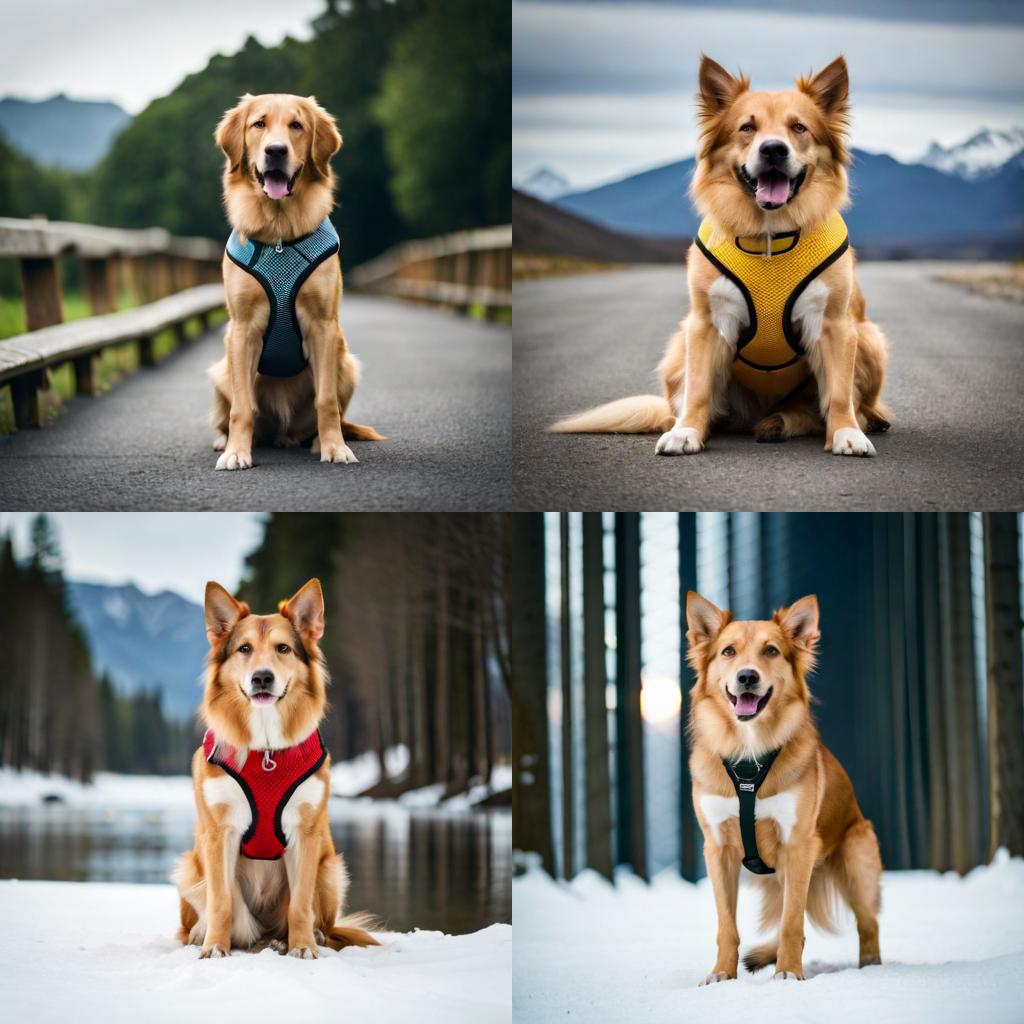
Walking outside with a pup is a beautiful feeling but before this, you must know that your pup is comfortable and enjoying the journey. Harness plays a crucial role in giving your pup a comfortable supported and pain-free trip.
Some dog owners who use collars get into trouble sometimes. If you want to use a harness instead of a collar you must ensure the size of your pup. The fitted harness will give you more control and safety for your pup.
Let’s get started!
Table of Contents
ToggleGather the Necessary Supplies:
For measuring your dog, gather 3 following supplies:
A soft measuring tape
A notepad and pen to record measurements
Treats or rewards for your dog’s cooperation
Determine the Harness Type:
Identify the type of harness you intend to purchase. There are various options available, including back-clip, front-clip, and step-in harnesses. Each type has specific measuring points, so it’s crucial to know which one you’re planning to use.

Measure the Neck:
Start by measuring the circumference of your dog’s neck, where the collar usually rests. Wrap the measuring tape around the base of the neck, just above the shoulders. Ensure it’s snug but not too tight. Record the measurement in inches or centimeters.
Measure the Chest or Girth:
Next, measure the girth or widest part of your dog’s chest. This is typically right behind the front legs. Wrap the measuring tape around the chest, ensuring it’s not too loose or tight. Take note of the measurement.
Measure the Length:
For certain harness types, you may need to measure the length of your dog’s body. To do this, start from the base of their neck and measure to the base of the tail. This measurement is crucial for determining the appropriate size, especially for step-in harnesses.
Research and Compare:
Consult the manufacturer’s sizing chart for the specific harness you’re interested in. Compare your measurements with the recommended size on the chart. Different brands may have variations in sizing, so it’s important to double-check.
Consider Adjustability:
Many harnesses come with adjustable straps, which allow for a more customized fit. Take note of the harness’s adjustable features and ensure they provide enough flexibility to accommodate your dog’s measurements.
Test the Fit:
Once you’ve selected a harness based on your measurements, it’s time to try it on your dog. Put the harness on and secure all the straps. Ensure that it fits snugly but doesn’t restrict your dog’s movement or cause discomfort. Allow your dog to move around and observe their comfort level.
Fine-Tuning the Fit:
Check for any areas where the harness may be too tight or too loose. Pay attention to the straps around the neck, chest, and belly. Adjust them accordingly to achieve a secure and comfortable fit. Remember, you should be able to fit two fingers comfortably between your dog and the harness.
Accurately measuring your dog for a harness ensures their comfort, safety, and overall enjoyment during walks and other outdoor activities. By following these step-by-step instructions and considering the specific harness type and adjustability, you can find the perfect fit harness for your beloved canine companion. Remember, a properly fitted harness will make a world of difference in your dog’s adventures and overall well-being.
Q: How do I know if I measured my dog correctly for a harness?
A: Double-check your measurements against the manufacturer’s sizing chart for the specific harness you’re interested in. If the measurements fall within the recommended range, you likely measured correctly. Additionally, when trying on the harness, ensure it fits snugly but allows your dog to move comfortably.
Q: What if my dog’s measurements fall between two sizes on the sizing chart?
A: In such cases, it’s generally recommended to choose the larger size. It’s easier to adjust a slightly larger harness to fit properly than to make a smaller one comfortable for your dog. The adjustable straps on the harness will help achieve a more customized fit.
Q: Can I use a measuring tape other than a soft one?
A: While a soft measuring tape is ideal, you can use a string or a non-stretchy ribbon to measure your dog’s neck and chest. Once you have the measurements, you can transfer them to a regular measuring tape or ruler for reference.
Q: How often should I measure my dog for a harness?
A: It’s a good idea to measure your dog’s size periodically, especially if they are still growing or if their weight fluctuates. It’s important to ensure that the harness remains properly fitted and comfortable for your dog over time.
Q: Can I measure my dog while they are sitting or lying down?
A: For accurate measurements, it’s best to measure your dog while they are standing. This helps ensure that the harness will fit properly when your dog is in an upright position during walks or other activities.
Q: What if my dog is in between sizes and has an unusual body shape?
A: If your dog has an unusual body shape or falls between sizes, consider harnesses that offer more adjustability, such as those with multiple straps or buckles. These types of harnesses provide more flexibility to achieve a better fit for unique body proportions.
Q: What if the harness I purchased doesn’t fit my dog correctly?
A: If the harness doesn’t fit properly, contact the manufacturer or retailer to explore possible solutions. They may offer exchanges or provide guidance on adjustments that can be made to achieve a better fit.
Q: Can I use the same measurements for different types of harnesses?
A: Different types of harnesses may require specific measurements. While some measurements like the chest or girth may remain consistent, others, such as the length, may differ depending on the harness style. Always refer to the specific measuring instructions provided by the manufacturer for each type of harness.



